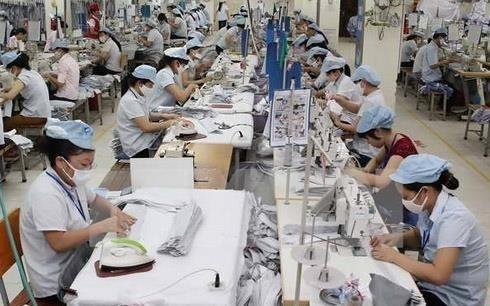Both Vietnam and Canada are members of the CPTPP, which also gathers nine other countries. The agreement covers a market of about 500 million people and has a combined GDP of 10.1 trillion USD, or 13.5 percent of worldwide GDP.
    |
 |
|
Vietnamese textile and garment firms are being active in making full use of the opportunities created by the CPTPP. (Photo for illustration) |
Le Tien Truong, Director General of the Vietnam National Textile and Garment Group (Vinatex), said that although the CPTPP doesn’t include the US – who imports nearly 50 percent of Vietnam’s annual textile-garment exports – there remain many other markets with great potential, particularly Canada.
Canada imports approximately 13.3 billion USD worth of textiles and apparel each year, but of this quantity, Vietnamese exports are still modest, valued at about 550 million USD annually.
Vietnam has yet to sign a free trade agreement with Canada, so the CPTPP will help open up chances for it to accelerate textile-garment shipments to the North American market in the coming years, Truong noted.
To grasp opportunities, Vinatex has actively sought and provided information for Canadian partners, he said, adding that it recently sent a delegation of businesses – including Hanoi Textile & Garment Joint Stock Corporation (Hanosimex), Hoa Tho Textile-Garment Joint Stock Corporation, Duc Giang Corporation, and Phong Phu International Joint Stock Company– to explore the potential of cooperation with Canadian importers.
Phong Phu International JSC said that through its direct meetings with Canadian businesses, it has learnt more about customer demand in this market, enabling it to plan more specifically towards set targets.
It has succeeded in implementing the ODM (original design manufacturer) production model. By applying advanced technologies, the company now only needs one to 1.5 days to create new product models, instead of the previous period of two months. The time needed to bring a new product to the market has also been reduced from eight weeks to two weeks.
Meanwhile, Hanosimex introduced 40 knitting products and cotton towels to Canadian partners. It highlighted the capacity of meeting the “yarn forward” rule of origin in its products.
It learnt from the requirements of Canadian businesses that the products must be able to supply, the company noted, adding that Canadian retailers and importers have shown their interest in textile and garments from Vietnam.
Hanosimex said that in order to optimise the advantages generated by the CPTPP, it will step up capitalising on material supply sources to satisfy the “yarn forward” rule of origin under this deal. It will also seek more suppliers in Vietnam or other CPTPP members to diversify products, and build flexible production models to meet orders with different requirements.
Hoa Tho Textile-Garment JSC also met directly with the Canadian firms it is partnering with to enhance connectivity and discuss cooperation plans for next year.
The enterprise said it will also make use of material supply sources in a way that meets the “yarn forward” rule of origin under the CPTPP to ensure product quality, competitive prices, and good services. Flexible production models will also be applied to meet partners’ requirements.
Source: VNA